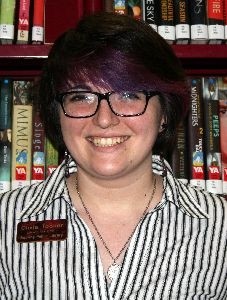
Albert Einstein said, “If you want your children to be intelligent, read them fairy tales. If you want them to be more intelligent, read them more fairy tales.”
From imagining princesses trapped in towers and kitchens or princes transformed into frogs and beasts; little girls on their way to grandmother’s house or little boys crying wolf; or any manner of talking animal being helpful or harmful; hundreds of classic fairy tales have been inspiring imaginations for hundreds of years.
And everyone likes their fairy tale a different way. Some prefer the Disney-fied adaptations, with an abundance of happy endings, songs and jokes; many of the Disney Princesses are based on fairy tales, popularizing familiar names like Cinderella or Snow White. Others like to read back to original sources, including the Grimm Brothers or Hans Christian Andersen, often with much darker themes and much less singing.
At any branch of the Heartland Library Cooperative, in the nonfiction sections of either the adult or children’s area, at call number 398.2 are all your classic fairy tale needs. From Grimm anthologies to picture books, and folklore from all over the world, that call number is exactly where you need to go.
But if you want a fairy tale that has deviated from the original, then you might need to explore a little further to a fractured fairy tale. Many fractured fairy tales have an “unexpected characterization, plot development or contrary point of view” and because of that unexpected twist, are most often funny. Jon Scieszka’s “The True Story of the 3 Little Pigs” tells the fairy tale from the Big Bad Wolf’s side, which turns out to be a complete misunderstanding and makes the Wolf a victim of circumstance.
But what if it’s a remade fairy tale but without being purposefully funny? That’s a retelling, taking the familiar characters, tropes, and plots and exploring different aspects of the tale or modernizing, like making Hansel And Gretel grow up to be witch hunters with excellent archery skills 2013’s “Hansel and Gretel: Witch Hunters.” In some cases, even setting it in the future or giving it a wildly different culture is enough to make the story new and interesting.
Take one popular fairy tale character: Cinderella has been everything from novels to television shows to feature films and other popular media. Disney possibly started the trend by animating her story in 1950 and making her the second of their princess line — but because she is a product of her time, her salvation is in marrying Prince Charming to escape her evil stepfamily. Then, Disney made her again in the 2015 live-action extravaganza with gorgeous costumes but this princess doesn’t need her prince as much as 1950 Cinderella did.
Young adult novels mold her into a futuristic cyberpunk cyborg girl in Marissa Meyer’s “Cinder,” or a young woman under a spell of obedience she strives to break like in Gail Carson Levine’s “Ella Enchanted.” Even dark musicals like Stephen Sondheim’s and James Lapine’s “Into the Woods” have something to say about Cinderella — this girl just wants to “go to the festival” and has an unrivaled determination to run from her charming prince.
According to Jack Zipes, a noted fairy tale scholar, fairy tales reflect the society in which they are told — whether they are presented as happy ending stories or a recall to something darker . They are timeless tales that take shape and reflect the society in which they are remade, so while at the core a story may remain the same (Cinderella goes to the ball and loses a slipper), it’s in the details that they change (how many nights of the ball, does she love the prince, is she rescued or does she rescue herself).
To those who already read and watch fractured and retold fairy tales, the reinterpretations and experiments are a familiar concept. In fact, those who watch ABC’s “Once Upon a Time” are incredibly familiar with constant remodeling. The changes authors, filmmakers, and playwrights make to fairy tales are what make these fairy tales interesting again. They become part of a continuing collective and tend to reflect the times more accurately. One hundred years ago, it would be highly unlikely to have a cyborg Cinderella or a story entirely focused on the villain’s perspective, like in Disney’s “Maleficent.”
If you want to watch a version of your favorite fairy tale, you can check out any number of DVDs and sets from the Heartland Library Cooperative, including seasons 1-3 of “Once Upon a Time,” “Into the Woods,” “Jim Henson’s the Storyteller,” “Maleficent,” and many other DVDs. Children’s books are often fairy tales, but some of the most recent, and fun, might be Interstellar Cinderella by Deborah Underwood. Young Adult novels have probably the highest concentration of fairy tale retellings to read, like Marissa Meyer’s “Lunar Chronicles”or Sarah J. Maas’s “Throne of Glass” series. And as for the adults, there are always novelized versions of the story to read like “Confessions of an Ugly Stepsister” by Gregory MaGuire or “Beauty: a retelling of the story of Beauty & the Beast” by Robin McKinley.